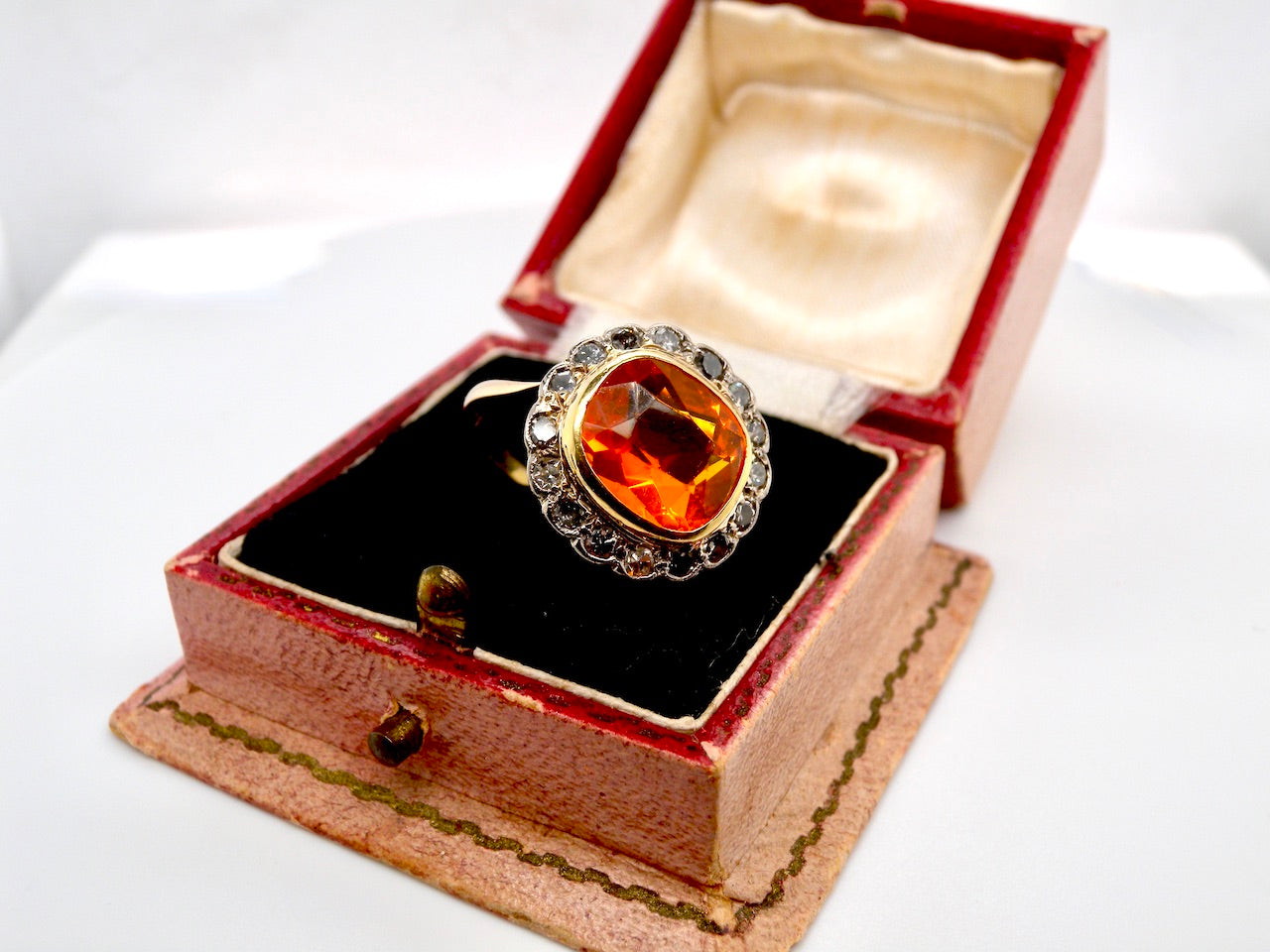I’ve been around antique jewellery all my life, and if there’s one thing that consistently draws a crowd in our shop, it’s a red gemstone. There’s just something about that fiery colour rubies, garnets, even the occasional spinel that people can’t take their eyes off.
At Charles Hart Jewellers, our family has been trading in fine jewellery for over 200 years. During that time, we’ve seen red gemstones come and go through our hands in every form imaginable: Victorian garnet cluster rings, Georgian ruby brooches, even the odd spinel that was once mistaken for a ruby. These stones aren’t just beautiful they carry stories.
Red has always been a colour of emotion. In the Victorian era, garnets were exchanged as tokens of love and friendship. Rubies, on the other hand, were believed to bring courage — not a bad talisman for someone heading off to war.
One of the loveliest pieces I remember handling was a late-19th century ruby ring, passed down through three generations of the same family. It wasn’t the largest ruby, and it certainly wasn’t flawless, but the history behind it gave the stone a character no “perfect” modern gem could ever match.

The Big Three Red Gemstones
Rubies
Rubies are the kings of red gemstones. Burmese rubies, in particular, are known for that deep, velvety “pigeon’s blood” hue that collectors chase at auction. Not every ruby on the market is natural, though. Many are heat-treated which can improve colour but reduces rarity. Antique rubies in their original settings are far more desirable, especially those with natural inclusions that prove their authenticity.
👉 Explore our Ruby Collection
Garnet
Victorian jewellers adored garnets. We’ve sold countless examples of Bohemian garnet cluster rings, where dozens of small stones are set tightly together to create the effect of one large, glowing jewel. They’re affordable compared to rubies, but they have a richness and warmth all of their own.
Customers often tell us their first “entry” into antique jewellery was a garnet piece affordable, wearable, and still steeped in history.
👉 Browse Vintage Garnet Jewellery
Spinel
Spinel is the great pretender. For centuries, it was mistaken for ruby even the “Black Prince’s Ruby” in the Crown Jewels turned out to be a spinel. Because of that history, antique spinel jewellery is surprisingly rare, and collectors are starting to take notice. I remember once showing a customer a Georgian pendant set with a bright red spinel they were amazed it wasn’t a ruby. That surprise is half the charm of spinel.

Tips for Collectors
• Check authenticity: Synthetic rubies became common in the early 20th century. I’ve seen more than one “family heirloom” turn out to be a lab-grown stone set into an Edwardian-style mount. Always have a trusted jeweller verify the gem before you buy.
• Provenance matters: A ruby or garnet ring with a clear family history, or one that’s passed through a reputable auction house, tends to hold value better than a piece with no paper trail.
• Condition counts: After decades in the trade, one of the first things I look at is the setting. A ruby is only as secure as its claws if they’re worn thin, the stone could be at risk. We’ve re-tipped countless antique rings to keep them safe for another generation.
• Antique = sustainable: Modern gemstone mining has a huge environmental footprint. Buying an antique ruby or garnet piece is a more ethical choice you’re preserving craftsmanship rather than demanding new extraction.
Caring for Red Gemstone Jewellery
Antique jewellery deserves a gentler touch than modern pieces. I always tell customers: avoid ultrasonic cleaners, no matter how tempting. They can loosen old settings and even damage delicate stones like spinel. Instead, use a soft toothbrush, warm water, and a mild soap. Dry the piece carefully and store it in a lined box, separate from harder stones like diamonds that could scratch the surface. A little bit of care goes a very long way — I’ve seen 200-year-old rings that still look stunning because they were looked after properly.
Why Collectors Love Them Today
What fascinates me most is that red gemstones never really fall out of fashion. At auction, fine rubies are still breaking records, while garnets and spinels are quietly finding their way into more serious collections.
But for most of our customers, it isn’t about the investment. It’s about the romance of owning a piece that has lived through generations. A ruby engagement ring from the 1920s, a Victorian garnet brooch, a Georgian spinel pendant each of them tells a story that no modern stone can match. That sense of history is what keeps collectors coming back.
Conclusion
Red gemstones are more than just beautiful stones. They’re tiny fragments of human history, carrying stories of love, courage, and craftsmanship. Whether it’s the commanding brilliance of a ruby, the warmth of a Victorian garnet, or the unexpected charm of a spinel, each has its place in a collector’s cabinet.
At Vintage Tom, we continue a tradition stretching back over two centuries at Charles Hart Jewellers. Every ruby ring, garnet brooch, or spinel pendant we handle has been chosen not just for its beauty, but for the story it carries. 👉 Explore our hand-selected collection of antique ruby, garnet, and spinel jewellery each piece is unique, and each one has a history waiting to be part of yours.
You May Also Like: Tips For Proper Care and Maintenance For Vintage Treasures



